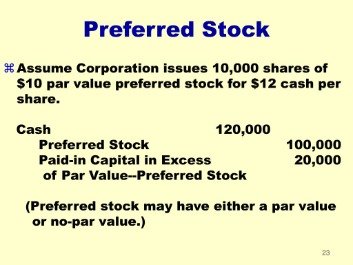
They are bonds offered by Rural Electrification Corporation Ltd (REC), Power Finance Corporation Limited (PFCL) and National Highways Authority of India (NHAI), among others. 54EC bonds are popular investment instruments as investing in 54EC bonds allows investors to claim tax deductions on long-term capital gains. If the individual fails at investing within the specified time frame, he/she can also deposit the amount in a Public Sector Undertaking (PSU) bank. In that case, the deposit will be viewed as an investment in capital gains bonds in India upon which tax exemption will be available under the Capital Gains Account Scheme, 1988. However, if such deposit does not convert to an investment within 2 years, it will be treated as a short-term capital gain in the year of expiry.
When should I invest in 54EC bonds?
The coupon payment date of PFC is July 31 each year whereas for REC and IRFC the coupon payment date is June 30 and October 15 of each year respectively. Interest in the year 2023 will be paid only to the investors whose allotment will be done by June 30, 2023 for PFC, May 31, 2023 for REC, and August 31, 2023 for IRFC. Now, as the capital gain of Rs. 50,00,000 is exempt from tax, the post-tax amount for it will remain unchanged. In the case of Ms Z, payable tax amount is Rs. 13,12,500 bringing down her taxable income to Rs. 36,87,500.
- These are bond for capital gain tax exemption, and so individuals and HUFs can apply.
- You can receive tax exemption under IT section 54EC by investing in these bonds.
- However, if such deposit does not convert to an investment within 2 years, it will be treated as a short-term capital gain in the year of expiry.
- These 54EC bonds make a good investment for long-term capital gains tax-saving in India.
- Suresh was hoping the ₹80 lakh full proceeds would serve a neat retirement corpus, but now he is looking at ways to save on tax.
This guide will cover all that you need to know about capital gains bonds under section 54EC of the Income Tax Act. Capital gains exemption allows avoiding tax by investing in specific assets. Section 54EC provides exemption for investing in certain bonds like NHAI, REC, PFC, and IRFC. Calculating taxable capital gains after investment can be done based on the amount invested in different bonds.

Bond Watch: How Section 54EC bonds would come in handy for you to save tax
The taxpayer will have to pay tax on the capital gains accordingly. Investment in securities market are subject to market risks, read all the related documents carefully before investing. Registration granted by SEBI, membership of BASL (in case of IAs) and certification from NISM in no way guarantee performance of the intermediary or provide any independent contractor vs employee assurance of returns to investors.
Individuals, as well as corporations, can sell their bonds in this market and generate capital gains. Another factor that adds to the lower definition of operating income and net sales demand of these bonds is the capital gains bonds interest rate (5.25%) which is comparatively lower than other investment avenues. Financial instruments can be divided into two types – market-linked financial instruments and fixed-income financial instruments. Market-linked financial instruments consist of equity shares, equity-oriented Mutual Funds, etc. Fixed-income instruments include government bonds, debentures, fixed deposits, etc.
Understanding Capital Bonds: A Comprehensive Guide to 54EC Bonds for Indian Investors
As Y would receive 5.25% on Rs. 50,00,000, her total income from that bond on maturity would be Rs. 63,12,500. Z’s earning, on the other hand, would be calculated on 10% which would make her total income on maturity Rs. 55,31,250. When a taxpayer sells long-term immovable property (land or building or both), they have the option to avail capital gain exemption under Section 54EC by investing in certain bonds.
Tax implications include exemptions on long-term gains and taxable interest income. These bonds are suitable for tax-saving and conservative investors seeking safety. In case this long-term asset is sold at gain after indexation benefit, this long-term capital gain is liable to be taxed. Section 54EC of Income Tax Act,1961 notifies certain bonds in which the accrued long term capital gain may be invested to claim LTCG tax exemption. These bonds are open for subscription from April 1 to March 31 of the financial year. Any financial instrument offers excellent financial leverage to an investor as their existing capital can be used to generate returns for them instead of remaining unused.
Capital Gain Bonds (54EC Bonds) India
Tailored for investors seeking to safeguard their capital gains, 54EC Bonds have become a go-to choice in the investment landscape. Let’s delve into the features, benefits, and real-world examples to understand why investors are turning to these bonds. Efiling Income Tax Returns(ITR) is made easy with Clear platform. Just upload your form 16, claim your deductions the direct write off method of accounting for uncollectible accounts and get your acknowledgment number online. You can efile income tax return on your income from salary, house property, capital gains, business & profession and income from other sources.
The value of one bond is generally ₹10,000 and minimum investment required is ₹20,000 while maximum investment allowed is ₹50 lakh. You can receive tax exemption under IT section 54EC by investing in these bonds. However, the interest earned is taxable as per the income tax slab. You will need to declare capital gain from 54EC bonds under your return filing since no tax is deducted at the source. Most importantly the taxpayer will have to, within 6 months of sale or transfer, reinvest the proceeds from the sale of a long term asset into a 54EC bond. However, many of us would be contemplating ways to minimize the capital gains tax (CGT) we must be liable to pay in the current tax year, or look at an exemption up to a certain limit for any CGT applicable.
